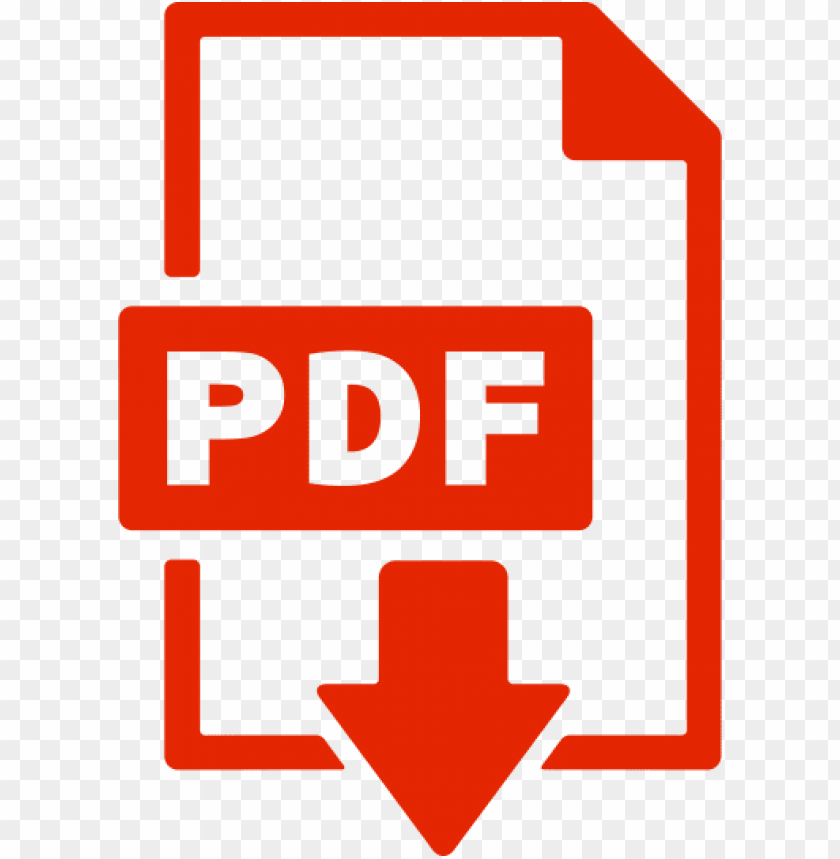June/July 2021
General Announcements
- IAG Young Authors Awards 2019-2 020
- Congratulations on the 90th birthday of Wolfgang Torge
- Call for participation in the pre-operational phase of the Second Earth Orientation Parameters Prediction Comparison Campaign (2nd EOP PCC)
Meeting Announcement
- 1st Announcement of the 2021 SIRGAS Symposium
Meeting Calendar
IAG Sponsored Meetings
- The 6th Satellite Soil Moisture Validation and Application Workshop
- IGS Workshop "IGS 2021: Science from Earth to Space"
- Unified Analysis Workshop 2021
- GGOS Days 2021
- 20th Assembly of WEGENER
- 2021 SIRGAS Symposium
- 2nd International Symposium of Commission 4: Positioning and Applications
IAG Related Meetings
- AOGS Annual 18th Meeting
- COSPAR 2022
Reports
- IAG Scientific Assembly 28.06-2.07, 2021
Obituary
- Tadahiro Sato (1945-2021)
General Announcements
IAG Young Authors Awards 2019-2020
The 2019 and 2020 IAG Young Authors Awards were published at the IAG Scientific Assembly 2021. The award is to draw attention to important contributions by young scientists in the Journal of Geodesy and to foster excellence in scientific writing. The Awardees are Dr Susanne Glaser (2019) and Dr Khosro Ghobadi-Far (2020). Congratulations. The citation to their work is below.
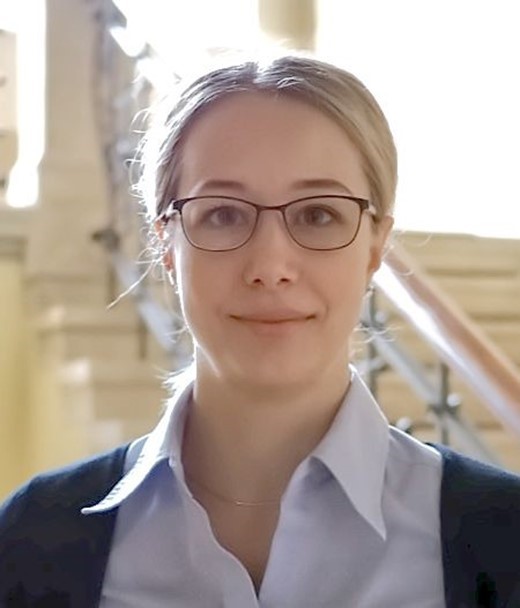
The paper deals with the effect of random and systematic errors and selection of local ties on the datum realization of global terrestrial reference frames. It is based on a thorough simulations study covering GPS, SLR and VLBI over seven years. These investigations have widespread implications for our understanding of the errors in contemporary TRFs.
Dr. Glaser received her Doctor of Engineering (Dr.-Ing.) degree in Geodesy at Technische Universität Dresden, Germany in 2014, and currently she works as a research associate at the GFZ German Research Centre for Geosciences at Potsdam, Germany.
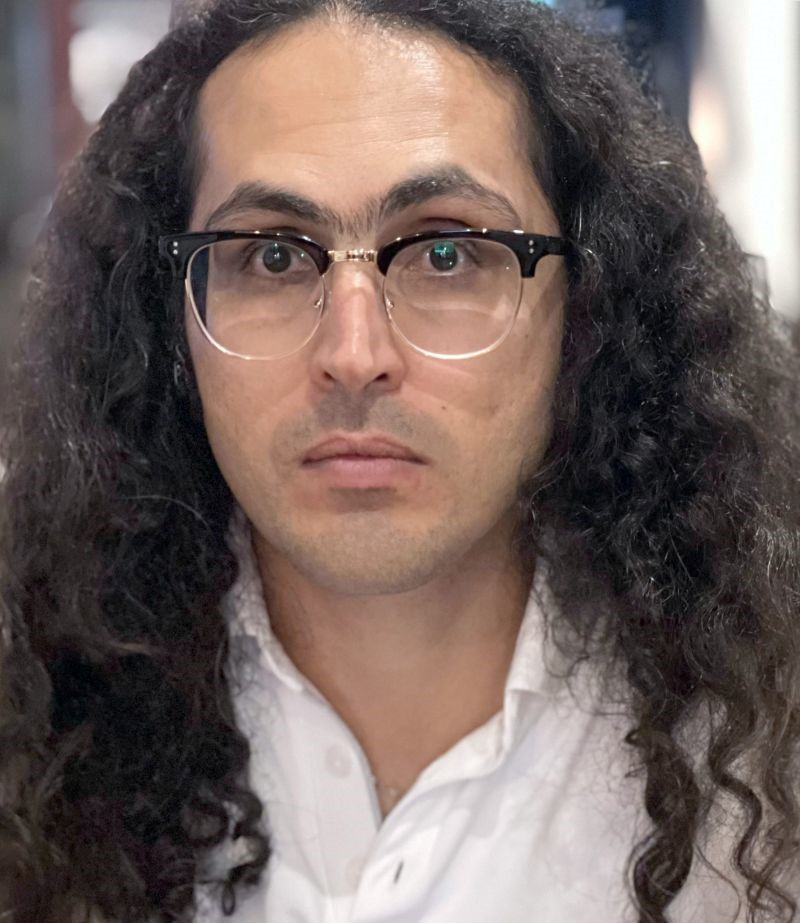
The IAG Young Authors Award 2020 is presented to Dr. Khosro Ghobadi-Far for his paper: Ghobadi-Far, K., Han, SC., Allgeyer, S., Tregoning, P., Sauber, J., Behzadpour S., Mayer-Guerr T., Sneeuw N. and Okal E. (2020): GRACE gravitational measurements of tsunamis after the 2004, 2010, and 2011 great earthquakes. Journal of Geodesy 94: 65.
This paper is a first demonstration of the utility of satellite gravimetry to detect the gravitational signatures of tsunami waves from space. This study demonstrates an innovative way of applying GRACE and GRACE Follow-On data to detect transient geophysical mass changes which cannot be observed by the conventional monthly Level-2 and mascon solutions.
Dr. Ghobadi-Far received his PhD at the University of Newcastle (Australia) in 2020 on analysis of GRACE data for developing new geophysical applications. Currently he works as a Postdoctoral Associate at the Department of Geoscience of Virginia Tech, USA.
Markku Poutanen
Congratulations on the 90th birthday of Wolfgang Torge
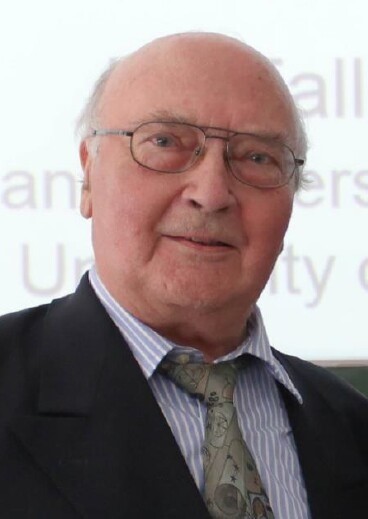
On June 4, 2021, Wolfgang Torge, Past President of the International Association of Geodesy (IAG), celebrated his 90th birthday. His home institution, the Institute of Geodesy of the Leibniz University Hannover, organised an online festive colloquium in his honour with a worldwide audience, where the undersigned had the honour to present the laudation. All friends, colleagues and scholars congratulated him wishing all the best for the future.
Wolfgang Torge was born in 1931 in Lower Silesia, at that time East Germany, today Poland. Due to the displacement of his family after World War II, he grew up in Lower Saxony, West Germany, and he studied Surveying and Geodesy at the Technical University Hannover, where he graduated in 1955. Gravimetry aroused his main interest; therefore, he started his career as a scientist in the geophysical prospection company Seismos Ltd. In 1958, he decided to complete the qualification for the government service of surveying and cadastre, and passed the state examination of Lower Saxony in 1961. Because of his dominating interest in science, the government agency delegated him as postgraduate to the Geodetic Institute of the Technical University Hannover, where he received the doctor’s degree in 1966. In 1967, he joined as an expert in cadastre a project of the German Fund for Developing Countries in Central America. This was the basis for his excellent scientific and personal relationship to Latin America. He became fluent in the Spanish language, which benefited him in his future projects and research in South America.
The scientific career of Wolfgang Torge started in 1968, when he was appointed Professor for Mathematical and Physical Geodesy and Director of the Institute for Theoretical Geodesy at the Technical University Hannover. He remained true to this position until his retirement despite other distinguished offers. His outstanding scientific achievement becomes impressive by his more than 200 publications from 1964 to date and his more than 20 PhD students covering all branches of Physical Geodesy. Most important and a standard at many universities worldwide are his textbooks “Geodesy” (first edition in German 1975, in English 1980, fourth edition together with his successor Jürgen Müller 2012; translated to Spanish, Greek, Chinese and Russian) and “Gravimetry” (1989). Fundamental projects were the gravimetric network from North Cape to Cape Town, whose results entered into the International Standardization Net (IGSN 71), and gravity measurements in several European, South American and Asian countries. Furthermore, he conducted geoid determinations for Germany and Europe, and established gravimetric Earth tide stations in several countries in Europe, South America and Asia, which served for the global Earth tide parameter estimation.
Wolfgang Torge’s official positions include many national scientific boards, e.g. the presidency of the German Geodetic Commission, the National Committee for Geodesy and Geophysics, and the Commission for Geoscientific Research of the German Research Council. In the International Association of Geodesy, he became Secretary of the IAG Section “Gravimetry” in 1976, and President of the Section “Determination of the Gravity Field” in 1983. From 1987 to 1991, he was Vice President and 1991 to 1995 President of the IAG. During this time, he initiated many activities and projects. He acted as Congress Director of the General Assembly of the International Union of Geodesy and Geophysics (IUGG) in Hamburg 1983, and he initiated the Geocentric Reference System for South America (SIRGAS) at the IUGG General Assembly in Beijing 1993, which was launched as a continental project under his direction in Asunción, Paraguay, in October 1993.
The academic awards of Wolfgang Torge are manifold. One may mention here some of them, e.g., his honorary membership in the Hungarian Academy of Sciences and the Argentine National Engineering Academy, the honorary professorship of the Institute of Seismology in Wuhan, China, and the Golden Helmert Medal of the German Association for Geodesy, Geoinformation and Land Management. He became Honorary President of the IAG and Fellow of the IAG and IUGG.
Without any doubt, Wolfgang Torge has rendered outstanding services to the IAG and the international geodetic community. His always mediating and never confronting way of discussion has convinced his colleagues and collaborators. Students around the world appreciate his textbooks for completing their education in geodesy, and scientists and practitioners acknowledge his advice. All of them are wishing him health and happiness for the coming years.
Hermann Drewes
Call for participation in the pre-operational phase of the Second Earth Orientation Parameters Prediction Comparison Campaign (2nd EOP PCC)
Earth orientation parameters (EOP) comprising of nutation offsets, pole coordinates, and dUT1 represent a critically needed link between the terrestrial and the celestial reference frame. Predictions of EOP are important for a number of operational activities including navigation of deep-space satellite missions, the pointing of astronomical instruments, or satellite-based positioning on Earth. Various agencies and institutions worldwide therefore maintain capacities to rapidly process space geodetic observations to obtain estimates for the Earth orientation parameters with short latencies as a basis for the subsequent prediction.
Between 2006 and 2008, the first EOP Prediction Comparison Campaign (EOP PCC) provided a very comprehensive assessment of the capabilities of different EOP prediction methods in an operational setting. The campaign met with great interest from the geodesy community. Since that time, much progress has been made in terms of improved geodetic data processing, reduced VLBI latency, and routine availability of model-based forecasts of effective angular momentum functions for atmosphere, oceans, and the terrestrial hydrosphere.
In light of those developments, a re-assessment of the various EOP prediction capabilities will be pursued in the frame of the Second Earth Orientation Parameters Prediction Comparison Campaign (2nd EOP PCC). Starting in 2021, the 2nd EOP PCC is being performed under the auspices of the IERS. The dedicated IERS Working Group on the 2nd EOP PCC has been established. The Office of the campaign is maintained by the Space Research Centre of the Polish Academy of Sciences (CBK PAN) in Warsaw (Poland) in cooperation with the GeoForschungsZentrum (GFZ) in Potsdam, Germany. The campaign is expected to run until 2023.
The EOP PCC Office at CBK invites all interested people to participate in the pre-operational phase of the 2nd EOP PCC. During that phase, we would like to encourage all Participants to submit their predictions as it will be the case in the real campaign, however we will only focus on formal issues (data formats, timeliness of submissions, file name conventions, etc.), not on the predicted values themselves. The purpose is to verify technical issues and confirm that Participants have not problems with registration and data submission.
The official start of the operational phase of the campaign is planned after the end of the pre-operational phase, which will be announced via IERS Message and the information on the EOP PCC webpage.
The 2nd EOP PCC is open to all. Predictions of each EOP are welcome and new types of prediction methods might enter at any time during the course of the campaign. Valid predictions of all kinds of EOP will be collected once per week in an operational setting.
Further information can be found on the websites of the 2nd EOP PCC (http://eoppcc.cbk.waw.pl/) and IERS (https://www.iers.org/WGEOPPCC2).
Justyna Śliwińska
2nd EOP PCC Office
Space Research Centre, Polish Academy of Sciences, Warsaw, Poland
eoppcc@cbk.waw.pl
Meeting Announcement
1st Announcement of the 2021 SIRGAS Symposium
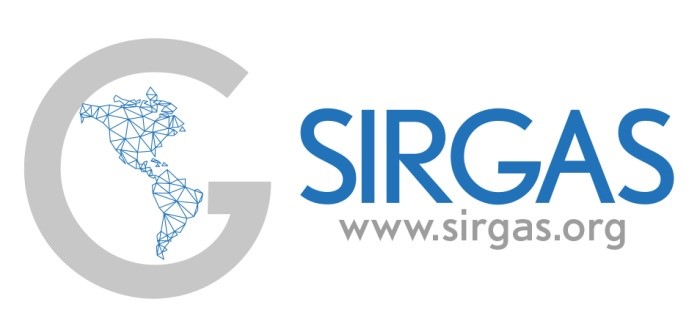
A new edition of the SIRGAS Symposium will take place from November 29 to December 1, 2021. The main goal of the 2021 SIRGAS Symposium is to convene the geodetic community of the Americas and the Caribbean to exchange experiences and progress, as well as discuss new projects related to the implementation, maintenance, and use of the geodetic reference infrastructure in the region.
Due to the CoVID-19 pandemic, the 2021 SIRGAS Symposium will be held virtually through the Zoom platform. The event will be free of charge with English and Spanish simultaneous translation.
Although the SIRGAS Symposiums are mainly attended by National Representatives, members of the Working Groups and projects, these events are open to the entire international geodetic community, and therefore we cordially invite:
- Representatives of regional organizations involved in the publication of geospatial information and Earth observations;
- Representatives of national institutions responsible for the definition of geodetic reference frames;
- Representatives of public and private agencies that use geodetic and geophysical information;
- Representatives of universities and research centers on topics related to geodesy and geophysics; and
- Scientists, professionals, technicians and students whose activities and research are related to SIRGAS.
- 1. November 29 - Report of the SIRGAS authorities: President of SIRGAS, Presidents of the SIRGAS Working Groups and update of the GRFA of UN-GGIM: Americas;
- 2. November 29 - Development and maintenance of the SIRGAS reference frame;
- 3. November 30 - Modeling of the Earth's gravity field (geoid, gravimetry, international reference system of heights);
- 4. November 30 - Applications of the SIRGAS reference frame (national reports, real-time applications, etc.);
- 5. December 1 - SIRGAS contributions to the modeling of the Earth System (troposphere, ionosphere, seismology, oceanography and hydrography).
Presentation abstracts of no more than 2000 characters (submitted through https://app.ign.gob.pe/simposio/expositores/) are due on July 30, 2021. The presentation theme must be related to the aforementioned topics and will be evaluated by the SIRGAS Scientific and Executive Committee. There are two presentation types:
- Oral presentations with a total presentation time of 15 minutes; and
- Posters: available for download in PDF format, and will be presented orally in 3 minutes.
For more details, visit the event website https://app.ign.gob.pe/simposio/
Sonia Costa
Meetings Calendar
IAG Sponsored Meetings
- The 6th Satellite Soil Moisture Validation and Application Workshop, September 14-16, 2021, Perugia, Italy
- URL: http://venti-eventi.com/
- IGS Workshop "IGS 2021: Science from Earth to Space", September 27-October 1, 2021, Boulder, CO, USA URL: https://www.igscb.org/workshop2021/
- Unified Analysis Workshop, October 5-8, 2021, Munich, Germany
URL: https://ggos.org/event/unified-analysis-workshop-uaw-2021/ - GGOS Days 2021, October 11-13, 2021, Munich, Germany
URL: https://ggos.org/event/ggos-days-2021/ - 2021 SIRGAS Symposium, November 29-December 1, 2021, Virtual
URL: https://app.ign.gob.pe/simposio/ - 2nd International Symposium of Commission 4: Positioning and Applications, September 5-9, 2022, Potsdam, Germany, URL: https://iag-commission4-symposium2022.net/
- 20th Assembly of WEGENER, october 25-29, 2022, Marrakech, Morocco, URL: https://wegener2021.sciencesconf.org
IAG Related Meetings
- AOGS Annual 18th Meeting, August 1-6, 2021, Singapore, URL: http://www.asiaoceania.org/society/public.asp?view=up_coming
- COSPAR 2022, July 16-24, 2022, Athens, Greece
URL: https://www.cospar-assembly.org
Further details are available in the IAG Event Calendar at: http://www.iag-aig.org/events.
Reports
IAG Scientific Assembly 28.6.-2.7, 2021

The Scientific Assembly of the International Association of Geodesy (IAG) was held in Beijing, China on June 28–July 2, 2021. Due to the COVID-19 pandemic, the Assembly was organized as a virtual conference. The main local organizer was the Chinese Society for Geodesy, Photogrammetry and Cartography (CSGPC) with more than 20 co-organizers comprising universities and research institutes, including the Chinese Academy of Surveying and Mapping.
The theme of the Assembly was "Geodesy for a Sustainable Earth" with a total of seven symposia. The topics of these were
1. Reference Frames,
2a. Earth’s Static Gravity Field,
2b. Earth’s Time-variable Gravity Field,
3. Earth Rotation and Geodynamics,
4. Positioning and applications,
5. Global Geodetic Observing System (GGOS), and
6. The ICC symposium with three Inter-Commission Committees and the IAG Project.
These themes reflect the current structure of IAG. During five days, a total of 36 sessions were organised under the themes.
An unknown factor in the planning was the effect of the COVID-19 pandemic, and how much that would affect on the number of participants and the number of abstracts. The Assembly was organised as a virtual meeting, first time in the history of IAG Symposia or Assemblies.
A total of 615 abstracts were submitted which was much more than originally expected. Due to the limited time of sessions each day (less than 4.5 h), the length of the oral talks was decided to restrict to five minutes. In each session there was reserved about half of the time for questions and discussions, which was meant to mitigate the lack of personal contacts. Similarly, the poster sessions contained a short introduction of the poster by the author, and a time slot reserved for questions and discussions.
A total of 255 orals were presented which is about 42% of total abstracts submitted. The rest were given as posters which were available for the participants during the whole Assembly. There were three parallel oral sessions and one poster session running each day. All sessions were recorded, and the recordings plus the posters are available also after the Assembly on the web site.
The number of participants was equally impressive. A total of 1269 registered attendees is an all-time record in the history of IAG meetings, as is the number of presentations. Of these, 435 are students and early-career scientists which is about 1/3 of all participants. This is a very good number, and we have to continue efforts also in the future meetings to attract young people to participate the IAG events.
The most popular were Symposia 4 and 5, with a total of 167 and 109 presentations, respectively. On the individual sessions, most popular were Session 4.1 Geodetic Remote sensing, Session 4.3 Techniques and Applications in High Precision GNSS, and Session 5.7 Advances in Geodesy for Geohazard Monitoring and Disaster Risk Reduction. These reflect the general trend in several presentations, with topics on emerging observing techniques, climate-related topics and geohazards in addition to the traditional geodetic topics on reference frames, gravity and deformations.
There will be also a very remarkable benefit IAG is offering to the meeting participants. The authors of accepted presentations are welcome to offer the full paper in the IAG renowned Symposia Series published by Springer. This series is Open Access, fully peer-reviewed, and the papers will be on-line shortly after the paper is accepted. The Open Access fees for the IAG Scientific Assembly participants are covered by the IAG; thus, the first author shall be the participant of the Assembly. The IAG Symposia Series is indexed in Web of Science (book by book) and in Scopus (as a series). Deadline to submit the manuscript via Springer electronic submission system is September 15, 2021.
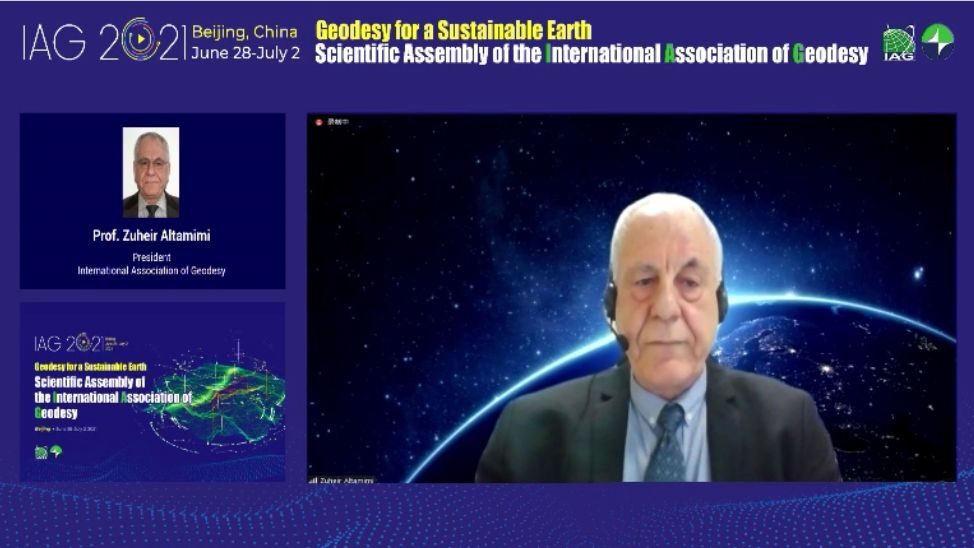
A screenshot of Opening Ceremonies of the IAG Scientific Assembly 2021. IAG President Zuheir Altamimi is giving his opening speech
The technical arrangements of the Assembly went extremely well, thanks to the Local Organizers and skilful technical personnel in Beijing. Sincere thanks to all of them who made this possible. Also many thanks to the Symposium organizers, Session conveners and chairpersons for the smooth guiding of the program in spite of these exceptional conditions. We’re looking forward to the IAG and IUGG General Assembly 2023 in Berlin, hopefully back to the regular format.
Markku Poutanen
IAG Secretary General
Obituary
Tadahiro Sato (1945-2001)

Prof. Tadahiro Sato passed away by cancer on May 23, 2021, near Mizusawa, Iwate, Japan, at the age of 76. He graduated the Iwate University and joined the International Latitude Observatory of Mizusawa (now a part of National Astronomical Observatory of Japan) in 1967 and earned PhD from Graduate University for Advanced Studies in 2000. He has been working on earth tide in a variety of approaches including instrumentation, observation, data analyses, and development of software packages. He spent a lot of time in remote fields such as Arctic (Svalbard), Antarctic (Syowa Base), and southeast Alaska for gravity measurements. He also served as the chair of local organizing committee of the International Earth Tide Symposium held in Mizusawa in September 2000 and played an important role in the Global Geodynamics Project (GGP). He received the Paul Melchior Medal (formerly called the Earth Tides Commission Medal) in 2008 at the 16th International Symposium on Earth Tides, Jena, Germany.
Selected publications
(Observing systems)
Harrison, J. C., and T. Sato, 1984. Implementation of electrostatic feedback with a LaCoste-Romberg model G gravity meter, J. Geophys. Res., 89, 7957-7961.
(Ocean tidal loading software GOTIC)
Sato T. and H. Hanada, 1984, A Program for the Computation of Oceanic Tidal Loading Effects "GOTIC", Publ. Int. Latit. Obs. Mizusawa, 10, 29-47.
Matsumoto, K., T. Sato, T. Takanezawa, and M. Ooe, 2001, GOTIC2: A Program for Computation of Oceanic Tidal Loading Effect, J. Geod. Soc. Japan, 47, 243-248.
(Fluid core resonance)
Sato, T., 1991, Fluid core resonance measured by quartz tube extensometers at the Esashi Earth Tides station, Proc. 11th Int. Sympos. Earth Tides, 573-582.
Sato, T., Y. Tamura, K. Matsumoto, Y. Imanishi, and H. McQueen 2004, Parameters of the fluid core resonance inferred from superconducting gravimeter data, J. Geodynamics, 38(3):375-389 DOI:10.1016/j.jog.2004.07.016.
(Arctic/Antarctic)
Sato, T., M. Ooe, K. Nawa, K, Shibuya, Y. Tamura, and K. Kaminuma, 1997, Long-period Tides Observed with a Superconducting Gravimeter at Syowa Station, Antarctica, and their Implication to Global Ocean Tide Modeling, Phys. Earth and Planetary Int., 103, 39-53.
Sato, T., J. Okuno, J. Hinderer, D. S. Macmillan, H. P. Plag, O. Francis, R. Falk, and Y. Fukuda, 2006, A geophysical interpretation of the secular displacement and gravity rates observed at Ny-Ålesund, Svalbard in the Arctic - Effects of post-glacial rebound and present-day ice melting, Geophys. J. Int. 165, 729-743 DOI:10.1111/j.1365-246X.2006.02992.x.
(Alaska)
Sato, T., C. F. Larsen, S. Miura and Y. Ohta, 2010, Reevaluation of the viscoelastic and elastic responses to the past and present-day ice changes in Southeast Alaska, Tectonophysics 511, 79-88, DOI:10.1016/j.tecto.2010.05.009.
Sato, T., S. Miura, W. Sun, T. Sugano, J. T. Freymueller, C. Larsen, Y. Ohta, H. Fujimoto, D. Inazu, and R. J. Motyka, 2012, Gravity and uplift rates observed in southeast Alaska and their comparison with GIA model predictions, J. Geophys. Res. 117, 1401- DOI:10.1029/2011JB008485.
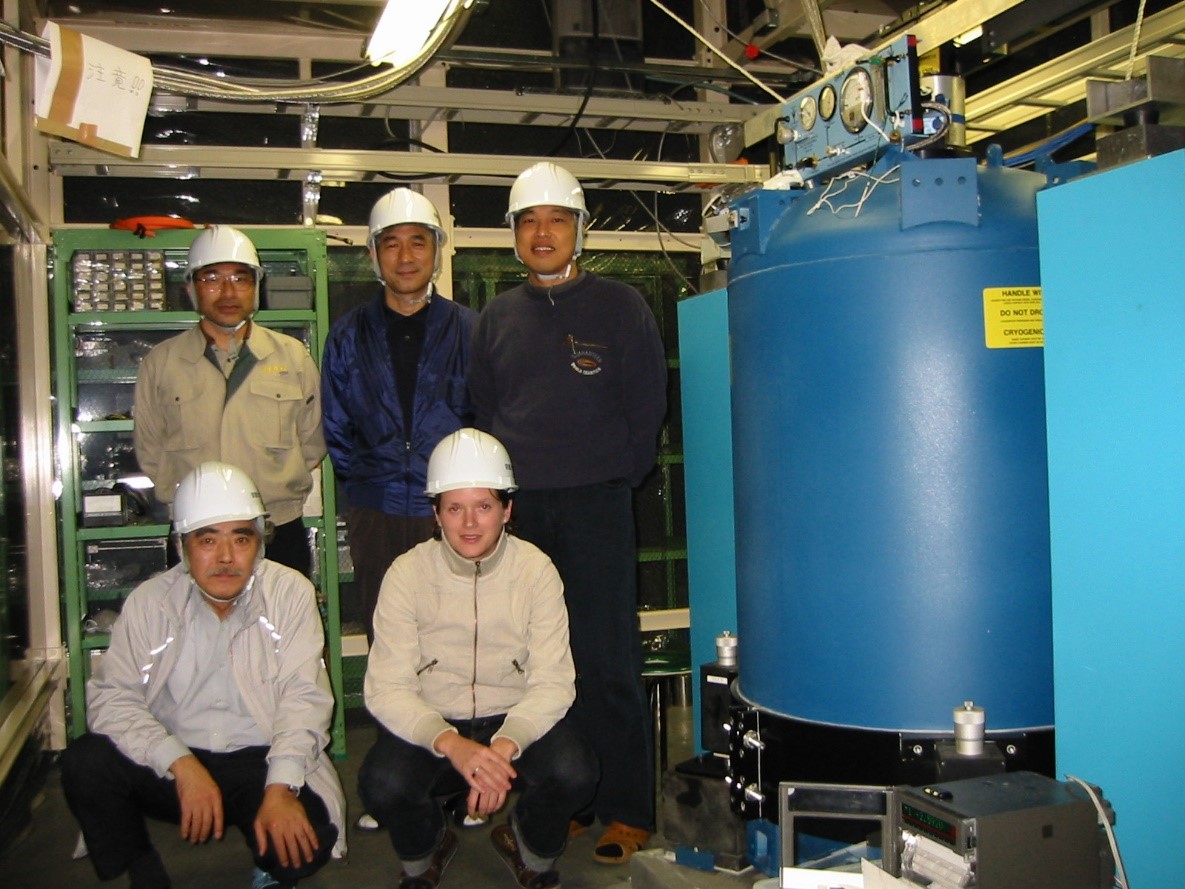
Installation of a superconducting gravimeter in 2004 October in an observing tunnel of the Kamioka station, central Japan. Tadahiro Sato (front, left), Séverine Rosat (front, right), Yoshiaki Tamura (back, left), Hiroshi Ikeda (back, center), Yoichi Fukuda (back, right)
Kosuke Heki & Yoshiaki Tamura
The IAG Newsletter is under the editorial responsibility of the Communication and Outreach Branch (COB) of the IAG. It is an open forum and contributors are welcome to send material (preferably in electronic form) to the IAG COB (newsletter@iag-aig.org). These contributions should complement information sent by IAG officials or by IAG symposia organizers (reports and announcements). The IAG Newsletter is published monthly. It is available in different formats from the IAG new internet site: http://www.iag-aig.org.
Each IAG Newsletter includes several of the following topics:
- news from the Bureau Members
- general information
- reports of IAG symposia
- reports by commissions, special commissions or study groups
- symposia announcements
- book reviews
- fast bibliography
| DOCUMENTS |
| JuneJuly2021.pdf |
